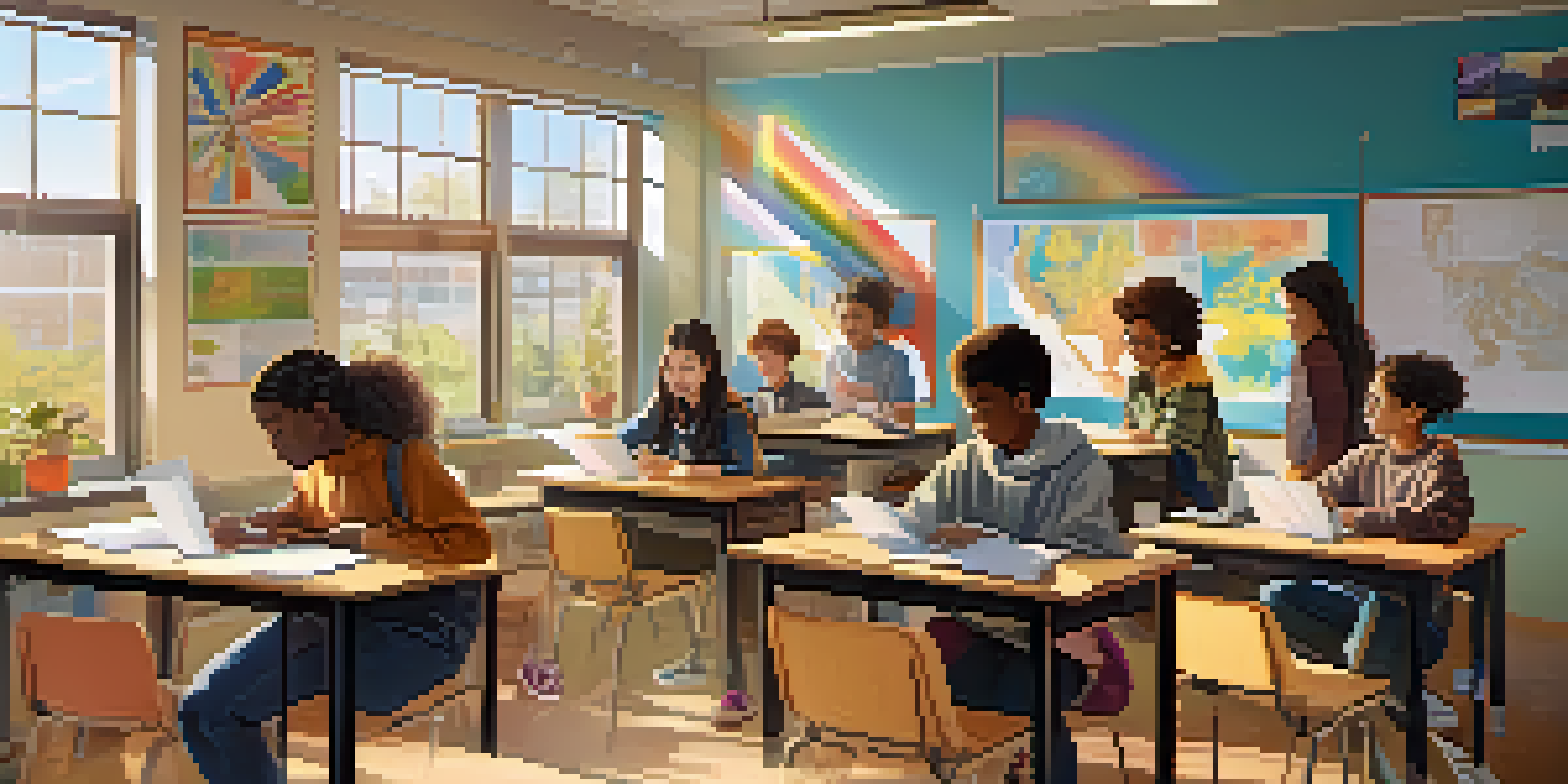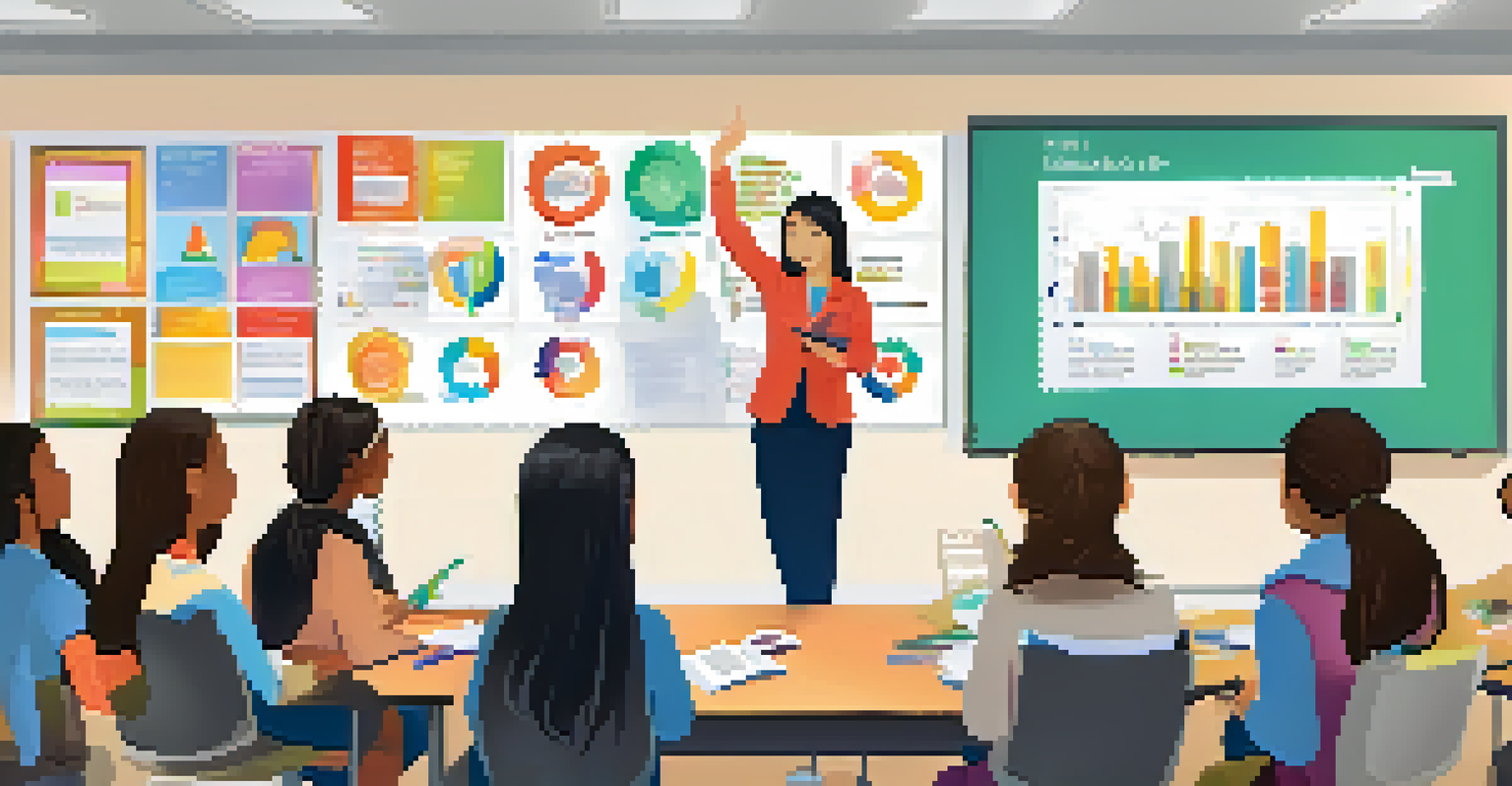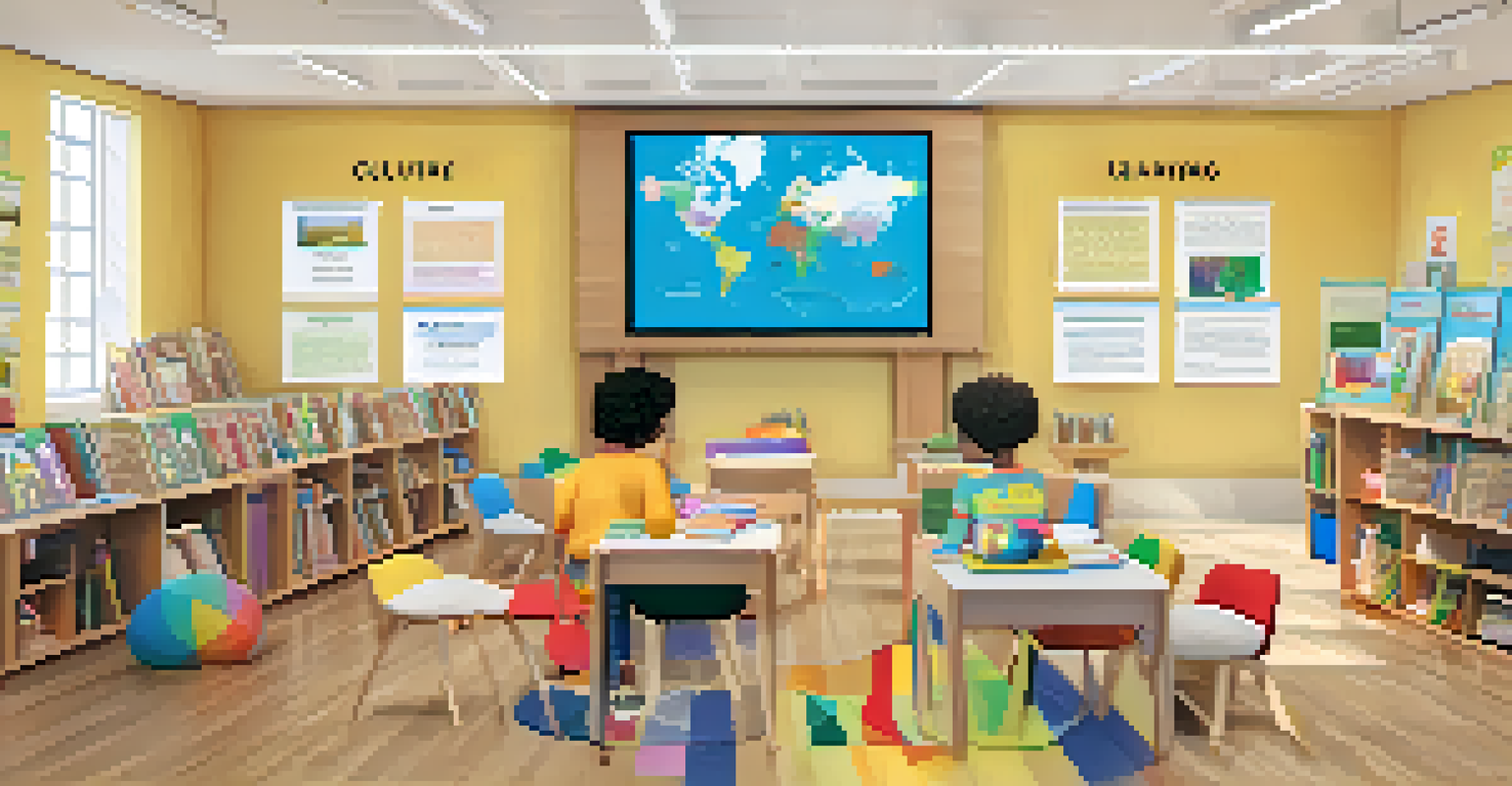Flipped Classroom: Navigating Cultural Differences in Learning

Understanding the Flipped Classroom Concept
The flipped classroom model turns traditional learning on its head. Instead of the teacher delivering lectures in class, students engage with content at home, often through videos or readings. This approach allows in-class time to be dedicated to hands-on activities, discussions, and collaborative projects, fostering a more interactive learning environment.
Education is the most powerful weapon which you can use to change the world.
By flipping the classroom, educators can create a space where students are active participants in their learning journey. This model encourages self-directed study, allowing students to learn at their own pace. As a result, it promotes a deeper understanding of the material, as students come prepared with questions and insights.
However, implementing a flipped classroom requires a thoughtful approach, especially when considering cultural differences in learning styles. Educators must recognize that students from diverse backgrounds may have varying levels of access to technology and different expectations regarding classroom participation.
Cultural Differences in Learning Styles
Cultural backgrounds significantly influence how students approach learning. For instance, some cultures emphasize individual achievement, while others prioritize group harmony and collaboration. Recognizing these differences is crucial for educators as they design their flipped classroom activities.

In collectivist cultures, students may feel more comfortable in group settings, where collaboration is encouraged. This contrasts with more individualistic cultures, where self-directed learning and personal initiative are highly valued. Understanding these nuances can help educators tailor their flipped classroom strategies to meet the diverse needs of their students.
Flipped Classroom Enhances Engagement
The flipped classroom model encourages active participation, allowing students to engage with content at home and collaborate in class.
Moreover, language barriers can also play a role in how effectively students engage with pre-class materials. Educators must ensure that resources are accessible and inclusive, providing additional support for non-native speakers or those who may struggle with the language used in instructional videos.
Creating Inclusive Learning Materials
To accommodate diverse learners, it's essential to create inclusive materials. This means ensuring that videos, readings, and other resources reflect a variety of cultural perspectives and learning styles. For example, incorporating stories or examples from different cultures can make content more relatable and engaging for all students.
The beautiful thing about learning is that no one can take it away from you.
Additionally, offering materials in multiple formats—such as text, audio, and video—can cater to different learning preferences. Some students may prefer watching a video, while others might find reading a transcript more helpful. Providing options allows learners to choose the method that resonates with them best, enhancing their overall comprehension.
It's also beneficial to solicit feedback from students about the materials. Understanding their preferences can lead to continuous improvement and ensure that resources are meeting the needs of a diverse classroom.
Facilitating Effective Classroom Interactions
In a flipped classroom, in-person interactions become crucial for effective learning. Educators need to create an environment where all students feel comfortable sharing their thoughts and ideas. This can be achieved by establishing ground rules for discussions that encourage respect and openness.
Utilizing small group discussions can help students from diverse backgrounds engage more freely. In smaller settings, students may feel less intimidated and more inclined to share their perspectives. This approach not only fosters inclusivity but also enriches the learning experience as students learn from one another.
Cultural Awareness is Crucial
Understanding cultural differences in learning styles helps educators tailor their flipped classroom strategies for diverse student needs.
Moreover, incorporating culturally relevant examples during discussions can help bridge gaps in understanding. When students see their backgrounds reflected in classroom conversations, it validates their experiences and encourages more active participation.
Addressing Technology Access Issues
One of the challenges of a flipped classroom is ensuring that all students have access to the necessary technology. In some communities, students may lack reliable internet access or devices to view online content. Educators must be proactive in addressing these disparities to create an equitable learning environment.
Providing alternative options, such as physical copies of materials or access to school resources, can help mitigate these issues. Additionally, schools can collaborate with local organizations to offer support, ensuring that every student has the tools they need to succeed.
Establishing clear communication about technology requirements at the outset allows students and their families to prepare accordingly. This transparency fosters a sense of community and support, further enhancing the flipped classroom experience.
Evaluating Student Understanding Across Cultures
Assessment in a flipped classroom should account for cultural differences in learning and expression. Traditional testing methods may not accurately reflect a student's understanding if they come from a background where rote memorization is emphasized over critical thinking. Educators need to adapt their evaluation methods to be more inclusive.
Incorporating diverse assessment techniques, such as project-based learning or reflective journals, can provide a more comprehensive view of a student's grasp of the material. These methods allow students to demonstrate their understanding in ways that align with their cultural strengths and learning preferences.
Technology Access Must Be Addressed
Ensuring all students have access to the necessary technology is essential for creating an equitable and effective flipped classroom environment.
Moreover, providing opportunities for peer assessment can also foster cultural exchange and collaboration. When students evaluate each other's work, they gain insights into different perspectives, further enriching their learning experience.
Fostering a Global Mindset in Education
Finally, promoting a global mindset in the classroom is essential for navigating cultural differences. This involves encouraging students to think critically about their own cultural assumptions and to appreciate the diversity of experiences in their peers. Educators can facilitate this by incorporating global issues and perspectives into the curriculum.
Encouraging students to collaborate with peers from different backgrounds fosters empathy and understanding. This can be achieved through virtual exchanges or projects that connect students across borders, allowing them to share their unique perspectives and learn from one another.

Ultimately, embracing a global mindset not only enhances the flipped classroom experience but also prepares students to thrive in an increasingly interconnected world. By valuing and respecting cultural differences, educators can create a more enriching and inclusive learning environment for everyone.